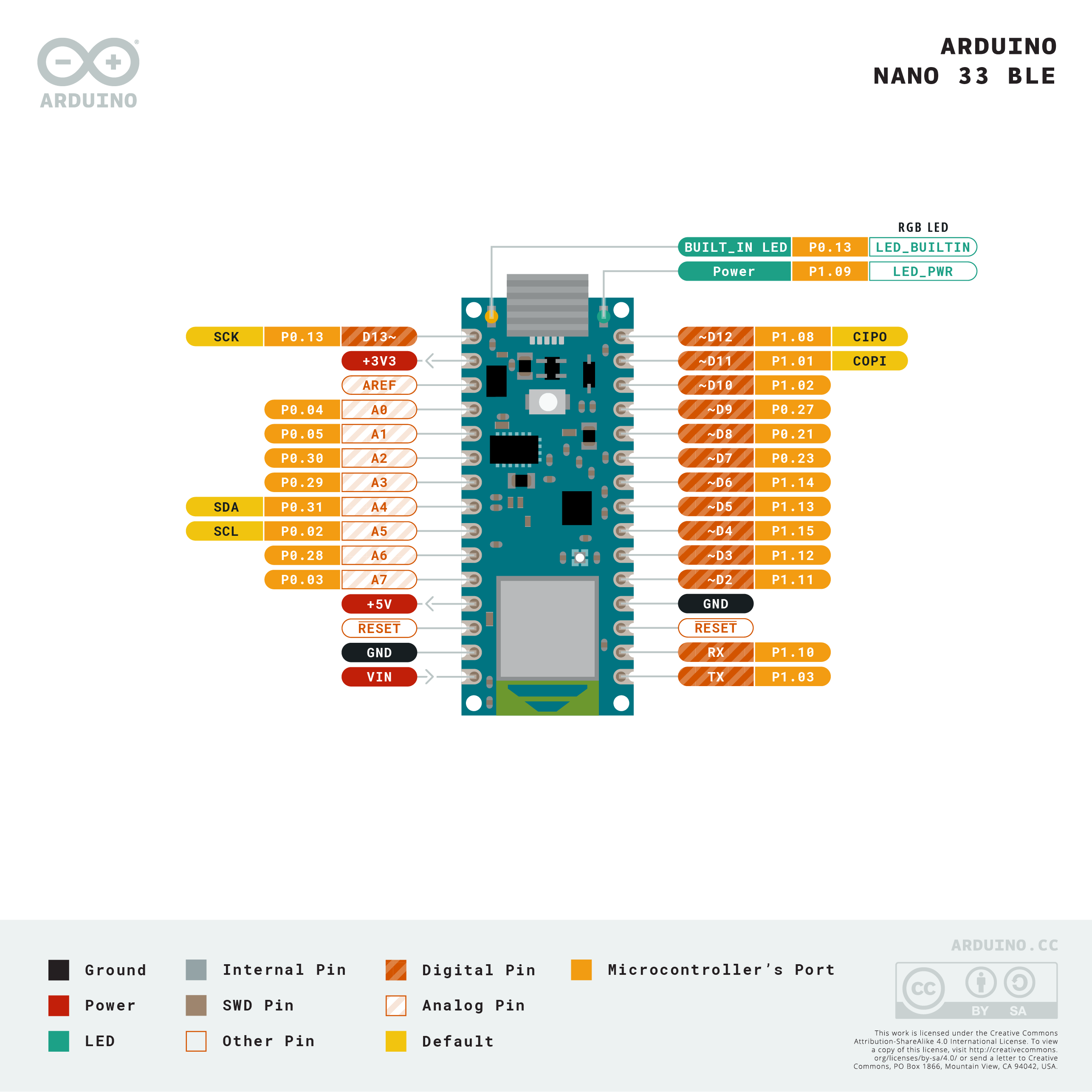Intro
The Nano 33 BLE (without headers) is Arduino’s 3.3V compatible board in the smallest available form factor: 45x18mm!

The Arduino Nano 33 BLE is a completely new board on a well-known form factor. It comes with an embedded 9 axis inertial sensor what makes this board ideal for wearable devices, but also for a large range of scientific experiments in the need of short-distance wireless communication.
The Arduino Nano 33 BLE is an evolution of the traditional Arduino Nano, but featuring a lot more powerful processor, the nRF52840 from Nordic Semiconductors, a 32-bit ARM® Cortex®-M4 CPU running at 64 MHz. This will allow you to make larger programs than with the Arduino Uno (it has 1MB of program memory, 32 times bigger), and with a lot more variables (the RAM is 128 times bigger). The main processor includes other amazing features like Bluetooth® pairing via NFC and ultra low power consumption modes.
The Nano 33 BLE comes with a 9 axis inertial measurement unit (IMU) which means that it includes an accelerometer, a gyroscope, and a magnetometer with 3-axis resolution each. This makes the Nano 33 BLE the perfect choice for more advanced robotics experiments, exercise trackers, digital compasses, etc.
🔧 Tech Specs
Tech Specs
Feature Description Microcontroller Nordic nRF52840 (Arm Cortex-M4 @ 64 MHz, 32-bit) Operating Voltage 3.3 V Input Voltage 5 V (via USB), 3.3 V (via VIN) Flash Memory 1 MB RAM 256 KB Bluetooth Bluetooth 5.0 Low Energy + Bluetooth Mesh support I/O Pins 14 digital, 8 analog, 12 PWM Communication UART, SPI, I2C, BLE USB Interface Native USB (CDC/Serial) Board Size 45 x 18 mm (same as classic Nano) Weight About 5g
Pinout

Tutorials

The Arduino Nano 33 BLE Sense combines a tiny form factor, different environment sensors and the possibility to run AI using TinyML and TensorFlow™ Lite. Whether you are looking at creating your first embedded ML application or you want to use Bluetooth® Low Energy to connect your project to your phone, the Nano 33 BLE Sense will make that journey easy.
Enable 5V Output
Many Arduino Nano boards are powered by 3.3 V but include a dedicated pin—labeled VUSB, VBUS, or 5V—that can output power from the USB port. This pin provides direct access to the 5 V line coming from the USB connection and can be used to power external components such as sensors, modules, or LEDs, while the board itself continues running at 3.3 V.
Warning- Do not connect the VUSB/VBUS/5V pin to any of the other pins on the board.
- The VUSB/VBUS/5V pin outputs power directly from the USB connector when enabled.
- Power from the USB supply can range from 4.4 V to 5.5 V, per USB specifications.
- Do not connect the VUSB/VBUS/5V pin to any of the other pins on the board. Supplying 5 V to other pins can permanently damage the board.




